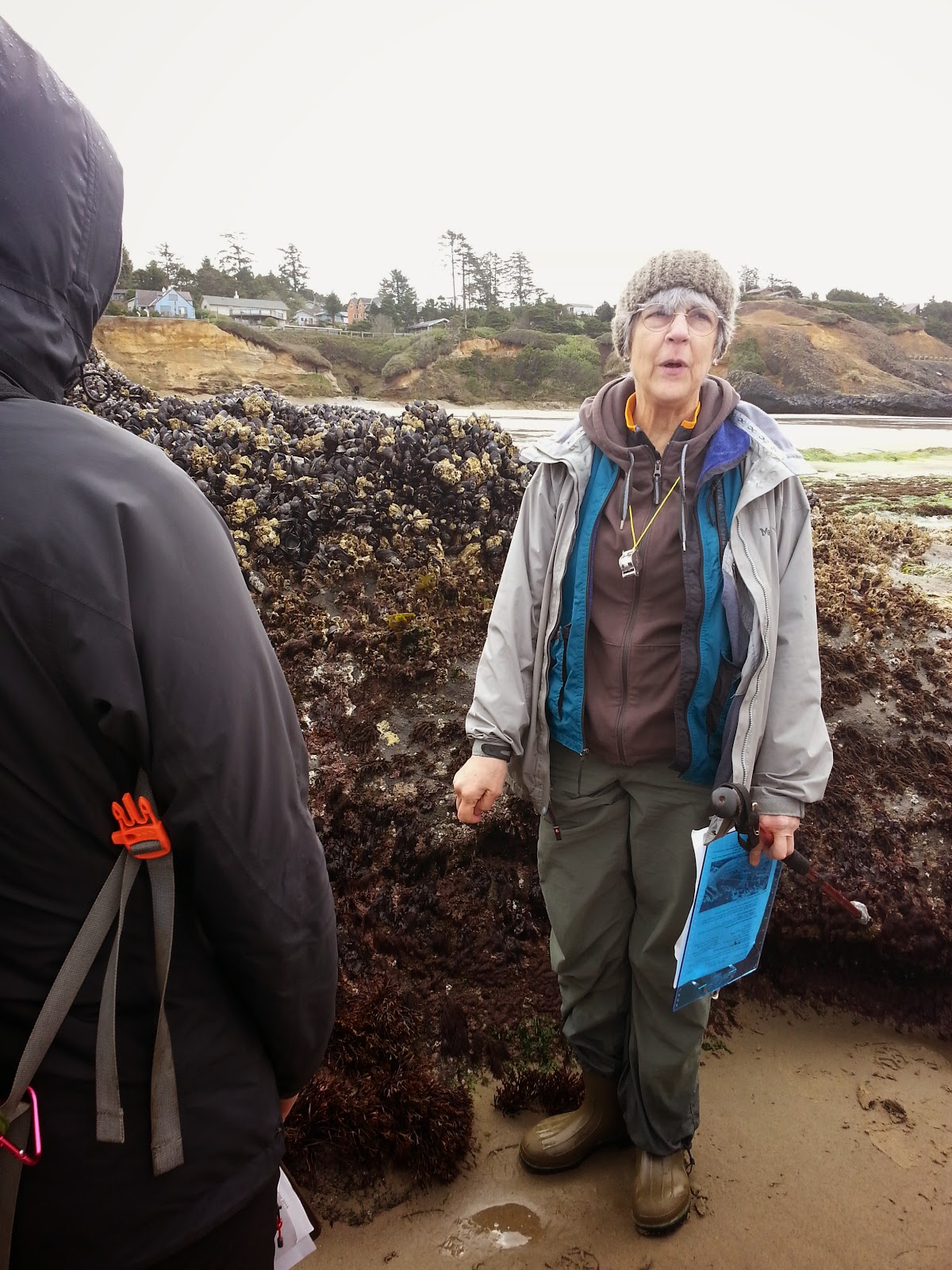Natalie Coleman and Heidi Meyer
 |
Amanda and Melanie on the way back up the
descent to Tokatee Klootchman
|
Amanda, Melanie, and Natalie searching for tidepools at Tokatee
Klootchman Natural Wayside, Spring 2015
 |
Natalie and Heidi catching fish in a tidepool at Tokatee
Klootchman
|
 |
Amanda and Heidi measuring the depth of a tidepool
at Tokatee Klootchman
|
On Tuesday it was time to turn in all of our work for the fishes section and
take the final, with a final goodbye to Su until our group research projects
during week seven. The fun with fishes continued that night while
everyone was taking a much needed break before starting algae, with the
conversation still returning to adipose fins and dorsal spines. Thank you Su
for such an exciting and intensive crash course in fish of the Pacific
Northwest.
 |
A variety of algae in tidepools at Seal Rock
|
Seal Rock Beach April 2015
|
Our next section on
marine algae started Wednesday afternoon with the very ecstatic and
enthusiastic Annette Olson. We started off the section with a couple of
lectures, including one from Chenchen Shen, a graduate student at OSU, and her
research on coralline algae. Groups of two or three were then assigned a taxa
where we have to find, collect, and identify specific species from that taxa,
while keeping an eye out for our treasure taxa. Our treasure taxa are specific
species that we will use to demonstrate to the class the ecology of our taxa.
| Neorhodomela larix at Seal Rock |
After getting into our
groups, the whole class enjoyed a nice break with some tea before diving into
our first algae lab. During the lab, we went around and tried to guess certain
morphological features on given algae, which ended up teaching us that you can’t
judge an algae by its color. Halfway through the lab, Miram poured hot water on
five specimens from the three different phyla, and all but one “magically”
changed color to green! The only one that stayed the same color was a green
algae. We even learned how to press the algae!
| Seal Rock, April 2015 |
 |
| Annette Olson explaining all of the types of algae at Seal Rock |
On Thursday, we woke up
bright and early and ventured to Seal Rock for the first time this term.
Annette showed us all around the beach, taking us to four different spots and
helping us find and identify our taxa. Her helpful and essential husband, Charlie,
followed the class around and took pictures of his wife while she lectured, he
also made sure that she ate later in the day! Once we were back at Hatfield, we
cleaned our collections and put them in the respective tanks. After lunch and
lectures, we returned to the lab and Annette taught the class how to identify
algae with a dichotomous key and how to cross section them.
| Annette showing the class some algae at our first stop at Seal Rock |
|
||
Originally we were supposed to go to Boiler Bay on Friday, but due to the high
waves and rainy weather, we ended up switching our Monday and Friday schedule.
So instead of spending more time at Boiler Bay, we enjoyed a nice and relaxing
half day of lectures and labs. Hello early weekend!
Webster, M.S., J.D.
Osborne-Gowey, T.H. Young, T.L. Freidenburg, B.A. Menge. 2007.
Persistent regional
variation in populations of a tidepool fish. Journal of Experimental Marine
Biology and Ecology 346:
8-20.



















